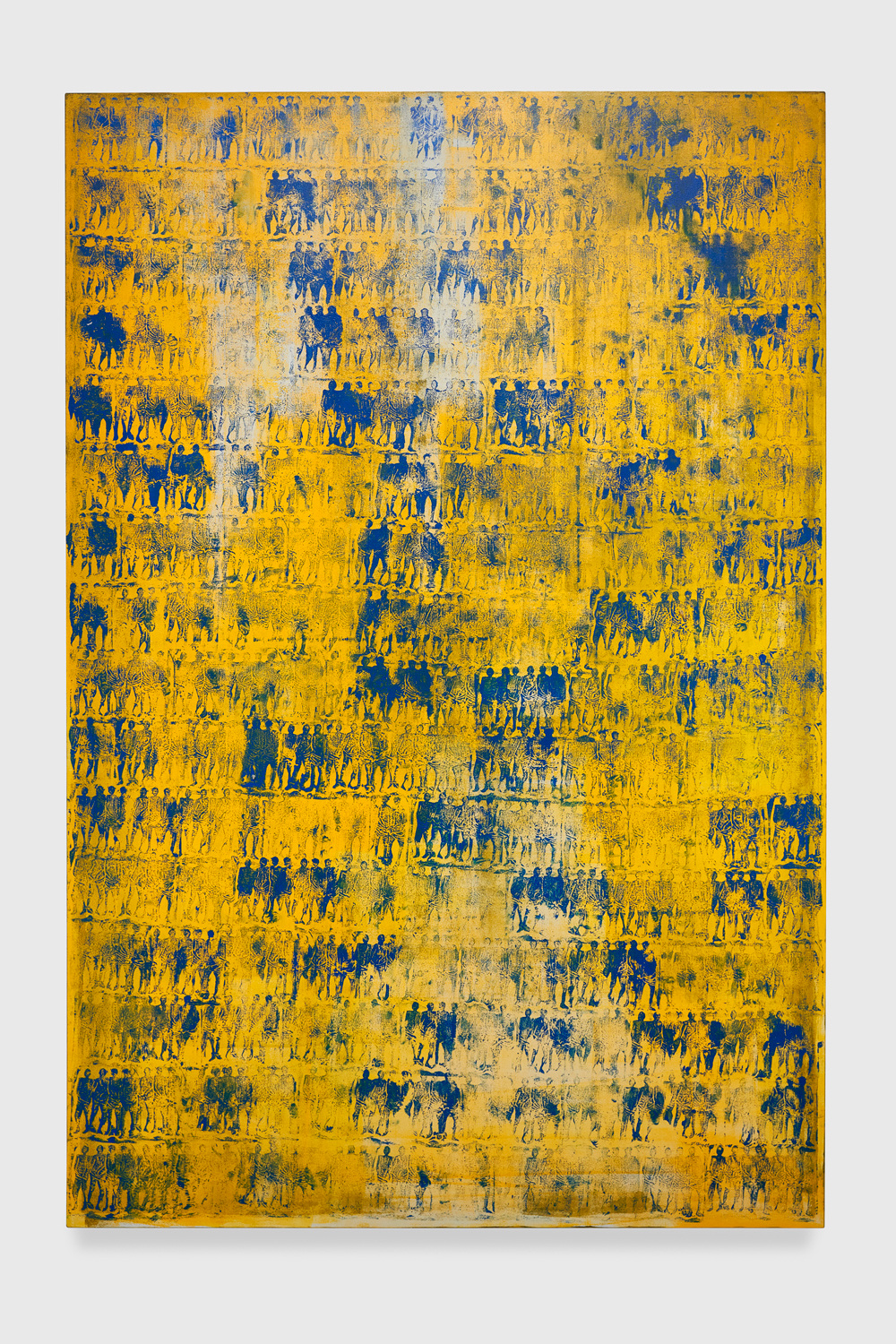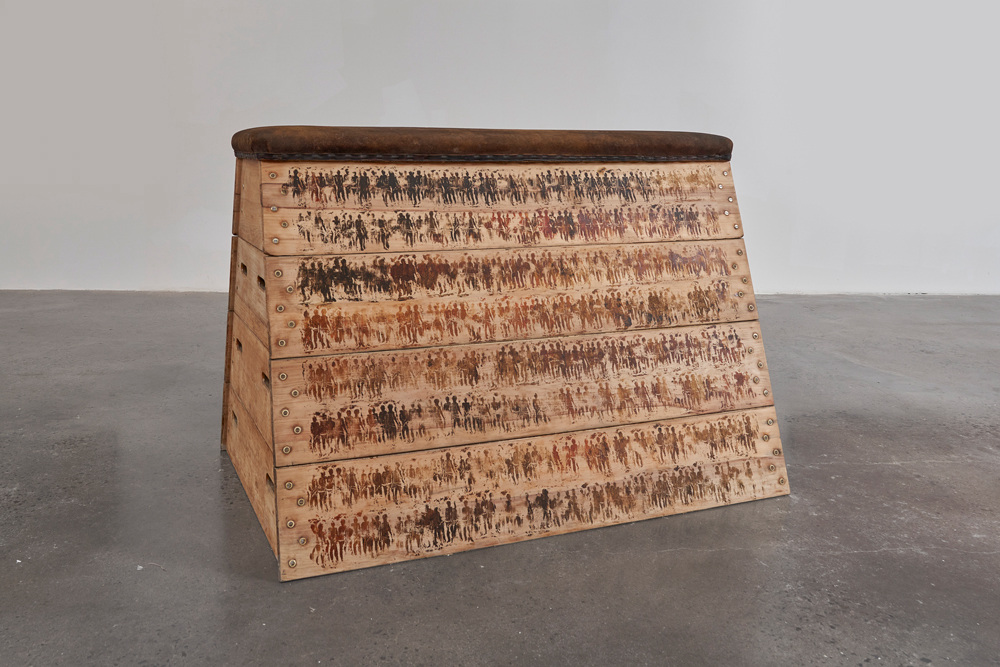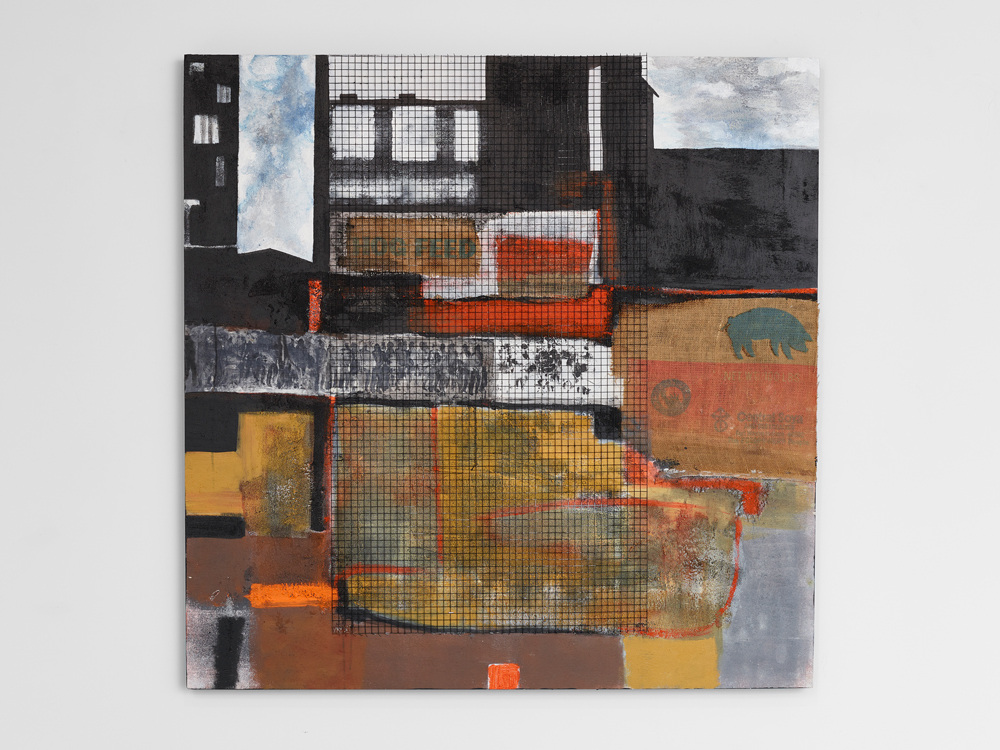Jared Owens is as much a self-proclaimed witch doctor as he is an artist. It’s been 10 years since he was incarcerated at FCI Fairton, a federal prison in New Jersey, and yet he is still sprinkling soil he smuggled via peanut butter jars from the facility’s recreational yard onto his paintings—one of many mediums he uses to speak to the carceral state in the United States. “To me, the soil is a sacred material,” the artist shares from his studio in the World Trade Center complex, where he is currently in residence at Silver Art Projects. “I took this soil from a place of congregation, a place of pain—think of all the blood on here from injuries, the tears, the sweat. That DNA, the memory of where the soil came from, it’s embedded in my paintings.”

Series 111 #10, 2022. Photography courtesy of the artist and the Malin Gallery.
Owens had always been a tinkerer who felt a “kinship with everybody who made art before [him].” Growing up mixed race in a predominantly white town in Rockland County, New York meant he felt quite isolated, and consequently most safe in Ms. Agresta’s ceramics class during elementary school. So in year five of his incarceration, when he found himself working in Fairton’s recreation department, it was only natural that he became interested in its ceramic program. He was invigorated by the “sense of competition” he witnessed between other incarcerated folks as they made cups or painted portraits for their outside loved ones. With time, Jared soon became the liaison between inside artists and staff, investing most of his time and energy into making sure the program remained.

It’s a key point. As an artist, Owens’s studio and materials could be taken from him and his peers with a mere changing of staff or administrative opinion. “Your agency can be stripped from you at any moment, so we cherished our time [with art],” Owens explains of the inherent anxiety surrounding maintaining an art practice while incarcerated. With only access to acrylic and clay, he developed his craft by reading incessantly about other media. Artforum was his Bible; Dick Blick’s catalog was his textbook. And, eventually, Owens went on to share his studies with hundreds of other emerging artists while inside. “Being incarcerated forces you to understand the contemporary art world in the context of your absence,” he says.
Now, Owens is anything but absent. His first solo show at Malin Gallery, “111 …And Other Stories,” debuted in New York on September 15. The range of work presented is enough to push back against anyone trying to pigeonhole his practice. “We’ve always been artists. It's not like you come home, you pick up a paintbrush, and because you were locked up, you’re a formerly incarcerated artist,” he says of the art world’s instinct to label him as such. After seven years in South Carolina, he feels New York’s critics instead place value on the narrative or person behind the work, and his certainly tells a story.
“It’d be ludicrous for me to come out and just paint trees,” Owens says, laughing, about why his materials and subject matter center on his carceral experiences. Like the soil he quite literally transported from his time at Fairton, every material integrated into his work for the Malin Gallery show holds meaning. “I gravitate towards objects that look carceral,” he adds when detailing one of his sculptures, a wire chicken coop he has submerged in concrete. You’ll also find burlap sacks that come with, as Owens puts it, “free messaging,” like the phrase “Hog Feed,” that emphasizes the relationship between pigs—a slang term for police—and their food—in this case, incarcerated individuals. Also on view are Owens’s shadow figures: full body silhouette stamps covering many of his pieces that represent the marginalized, the criminalized, the “forgotten slices of humanity” that are multitudinous in our society. The act of physically stamping these figures is a nod to the use of stamps in the court system.

When asked if he’s tired of having to always come back to incarceration and the criminal legal system as his subject matter, Owens doesn’t skip a beat: “It can’t be tiring, because it’s still relevant, because they keep locking people up.” There are two million people in the United States’ prisons and jails as we speak, and Owens’s work argues that punishment does not create a civil society. “Having the system operate the way it does is bad for us all,” he adds. “You're taking future scientists, artists, generations of creatives and marginalizing them for profit.”
While Owens does not identify as an activist, his exhibition presents a visual commentary on the inhumane existence of the prison system. “That’s what I like to do,” he says, “let the pieces speak.”
"111 …And Other Stories" is on view at the Malin Gallery until November 12, 2022, at 515 West 29th St Street, Level Entrance, New York, NY 10001.










 in your life?
in your life?

